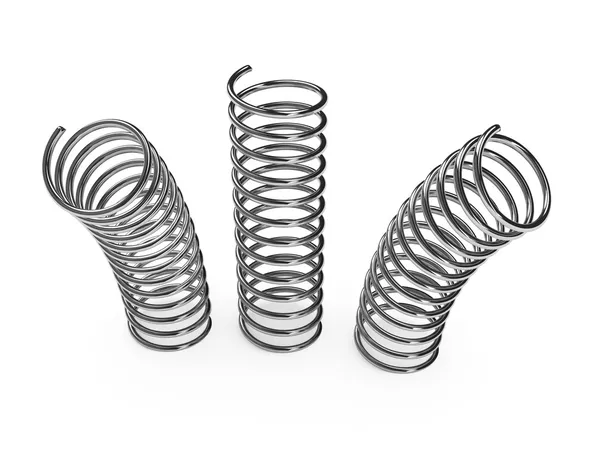Did you know human beings, numbers, plants, fruits and vegetables, music, and everything else in our world is made of vibrational frequencies? Vibrational frequency refers to the rate at which an object or system oscillates or vibrates around a central point or equilibrium. It is a fundamental concept in physics and is closely related to the idea of oscillations and waves. In simple terms, vibrational frequency is a measure of how quickly a particle or a system moves back and forth from its rest position. The unit of measurement for frequency is Hertz (Hz), where 1 Hertz corresponds to one vibration or oscillation per second.
Vibrational frequencies are a fundamental aspect of our natural world and have far-reaching implications in various scientific disciplines and practical applications, from musical instruments and communication technologies to materials science and chemistry. Here are a few examples of how we can understand vibrational energies around us:
Mechanical Vibrations: Objects like strings, springs, and pendulums exhibit vibrational frequencies. When a guitar string is plucked, it vibrates at a certain frequency that determines the pitch of the sound produced.

Molecular Vibrations: In the realm of chemistry, molecules are composed of atoms held together by chemical bonds. These atoms are in a constant state of motion, and they can vibrate around their equilibrium positions. These molecular vibrations are quantified by their vibrational frequencies and are crucial for understanding molecular behavior and spectroscopy.
Electromagnetic Waves: Light and other electromagnetic waves also have frequencies. The electromagnetic spectrum includes a wide range of frequencies, from radio waves with low frequencies to gamma rays with extremely high frequencies.
Quantum Mechanics: In quantum physics, particles like atoms and molecules exhibit quantized energy levels, and their vibrational frequencies are related to the energy differences between these levels. This concept is essential for understanding phenomenons like molecular spectroscopy and the behavior of atoms in a lattice.
The concept of human vibrational frequency refers to our overall state of well-being, energy, and consciousness. We tend to be able to tell if we’re vibrating on higher or lower levels by being in-tune with how we feel, as well as observing those around us and environmental factors and experiences.
Emotions and Mental State: Positive emotions like love, gratitude, and joy are often associated with higher vibrational frequencies, while negative emotions like fear, anger, doubt, and sadness are associated with lower frequencies. Practices like meditation and mindfulness are wonderful tools to help raise our vibrational frequencies by promoting a calm and positive mental state.
Physical Health: Good physical health contributes to a higher vibrational frequency. Eating a balanced diet, staying hydrated, getting regular exercise, and proper sleep can positively influence our energy and well-being.

Spiritual Practices: Engaging in spiritual practices such as prayer, meditation, and energy healing raise our vibrational frequency by promoting a deeper connection to our inner self and/or a higher power.
Environment: Surroundings can also influence one’s energy. Spending time in nature, being in peaceful and uplifting environments, and avoiding negativity are ways to maintain a higher vibrational frequency.

Positive Relationships: Engaging in positive and supportive relationships can elevate our vibrational frequency, while toxic or draining relationships can lower it. It is important to assess your environment to understand what might be hurting or hindering you.
Mindset and Beliefs: Holding positive and empowering beliefs about ourselves and the world can contribute to a higher vibrational frequency.
Here are some practices, that when done regularly, can help us to remain at a higher frequency:
Meditation and Mindfulness: Meditation and mindfulness practices promote relaxation, reduce stress, and create a positive mental state. These practices may help you cultivate a sense of inner peace and calmness.
Positive Thinking and Affirmations: Practicing positive thinking and using affirmations can help shift your mindset to a more optimistic and empowered perspective, which might contribute to an overall sense of well-being.

Gratitude: Practicing gratitude involves focusing on the positive aspects of your life and acknowledging the things you’re thankful for. This practice can promote a sense of contentment and positivity.
Healthy Lifestyle Choices: Engaging in regular exercise, maintaining a balanced diet, staying hydrated, and getting enough sleep are essential for overall physical, mental, and emotional health.

Energy Healing Practices: Practices like Reiki, acupuncture, and other forms of energy healing can balance and harmonize the body’s energy systems, potentially promoting a sense of well-being.
Spending Time in Nature: Connecting with nature, whether through outdoor activities or simply spending time in natural environments, will have a positive impact on one’s energy and mood.
Creative Expression: Engaging in creative activities such as art, music, writing, or dancing can help you channel your emotions and energy in positive ways.

Breathwork and Yoga: Focused breathing exercises and yoga practices help align the body and mind, reduce stress, and promote relaxation.
Healthy Relationships: Surrounding yourself with supportive, positive, and nurturing relationships can contribute to a more positive outlook on life.
Mind-Body Practices: Practices like Tai Chi, Qigong, and certain forms of yoga combine physical movement, breath control, and mental focus to promote balance and well-being.
Volunteering and Helping Others: Contributing to the well-being of others through volunteering and acts of kindness can foster a sense of connection and purpose.
We can perceive a limited range of frequencies within the larger spectrum of electromagnetic and acoustic waves. The frequencies that we can experience cover a relatively small portion of the entire spectrum, which spans from extremely low frequencies to extremely high frequencies.
Here are some of the frequencies that we experience:
Hearing Range (Audible Frequencies):
The average human can perceive sound frequencies ranging from about 20 Hz to 20,000 Hz (or 20 kHz). The lower end of this range corresponds to deep bass sounds, while the upper end includes higher-pitched sounds like chirping birds and musical instruments.
Infrasound:
Infrasound refers to sound frequencies below the lower limit of our hearing (below 20 Hz). While we can’t hear these frequencies, we can sometimes feel their effects, such as vibrations or pressure changes.
Ultrasound:
Ultrasound refers to sound frequencies above the upper limit of our hearing (above 20 kHz). It’s used in various medical and industrial applications, including medical imaging and cleaning.
Visible Light: While not frequencies in the auditory sense, visible light is a range of electromagnetic frequencies that we can see. The visible spectrum ranges from approximately 400 nanometers (nm) for violet light to about 700 nm for red light.
Radio Frequencies:
We can’t directly perceive radio frequencies, but we use devices like radios, televisions, and Wi-Fi that operate within this range. Radio frequencies cover a broad range, from kHz to GHz.

Cellular Frequencies:
Similarly, cellular communication operates in frequency bands that are beyond human perception. These frequencies fall within the microwave range, typically in the GHz range.
X-rays and Gamma Rays:
X-rays and gamma rays are extremely high-frequency electromagnetic waves that are used in medical imaging and radiation treatments. These frequencies are well beyond human perception and can be harmful in excessive doses.
Gratitude practices are great ways to remain in a higher frequency because you’re constantly focused on what feels good and what you’re grateful for.
Try incorporating these ten simple techniques into your daily routine:
- Gratitude Journal: Write down three things you’re grateful for every day. This helps shift your focus to the positive aspects of your life.

- Morning Gratitude: Start your day by mentally listing or saying aloud three things you’re grateful for. This sets a positive tone for the day.
- Express Gratitude: Take a moment to express gratitude to someone – it could be a family member, friend, coworker, or even a stranger.
- Gratitude Walk: During a walk, focus on appreciating the beauty of nature, the ability to move, and the sensory experiences around you.
- Mealtime Gratitude: Before a meal, pause to appreciate the food, the effort that went into preparing it, and the nourishment it provides.
- Gratitude Affirmations: Incorporate gratitude into your daily affirmations. For example, “I am grateful for the opportunities that come my way.”
- Reflect on Challenges: Find something positive or a lesson in challenging situations, and express gratitude for the growth or learning it brought you.
- Gratitude Jar: Throughout the day, write down moments of gratitude on small pieces of paper and put them in a jar. Review them at the end of each week or whenever you might need a vibrational boost.

- Gratitude Meditation: Dedicate a few minutes to a gratitude meditation, where you focus your thoughts on things you’re grateful for.
- Bedtime Gratitude: Reflect on the day and identify at least three things that went well, no matter how small, and express gratitude for them.
Oftentimes, we can find ourselves focusing on the past or future and disregarding our present moment. The present is all that is real as we cannot change the past nor can we predict what will happen in the future. When we harp on what we cannot control we can fall into less than desirable frequencies that keep us from being in the state we want. Here are a few ways we can work on becoming more mindful and living in the present:
- Mindful Breathing: Take a few minutes to focus solely on your breath. Observe each inhale and exhale, bringing your attention back whenever it wanders.
- Body Scan: Pay attention to different parts of your body, from head to toe, noticing any sensations without judgment.
- Sensory Awareness: Engage your senses fully in the present moment. Notice the sights, sounds, textures, and scents around you.
![]()
- Digital Detox: Set aside specific times in your day to disconnect from screens and technology, allowing yourself to fully engage in the real world.
- One Task at a Time: Focus on completing one task without distractions. Give it your full attention, whether it’s work, reading, or a simple chore.

- Mindful Eating: Pay attention to the flavors, textures, and smells of your food. Eat slowly and savor each bite.
- Gratitude for the Present: During your gratitude practice, also focus on the present moment and express gratitude for the here and now.
- Nature Connection: Spend time outdoors, appreciating the natural world around you. Take in the beauty and tranquility of your surroundings.
- Listening Fully: When in conversation, practice active listening. Put aside your own thoughts and truly hear what the other person is saying.
- Yoga or Meditation: Engage in a yoga or meditation session, which encourages you to be fully present in your body and mind.

When speaking of frequencies, it’s important to understand the connection with our inner-workings as it relates to these vibrations. With sounds in particular, music frequencies can influence our physiology, emotions, and overall well-being. Music frequencies are often discussed in the context of sound therapy or vibrational healing, along with their proposed connections and effects.
Take a look at a few of the auditory frequencies that can elevate your space, sense of emotions, and mood:
528 Hz – The Love Frequency: This frequency is often associated with the “miracle” or “love” frequency. It’s believed to promote healing, love, and harmony. Some suggest that listening to music at this frequency can have a positive impact on the body’s energy and overall well-being.
432 Hz – The “Natural” Frequency: This frequency is said to be more in tune with the natural vibrations of the universe. Some believe that music in 432 Hz can promote relaxation, stress reduction, and a sense of calmness.
639 Hz – The Connection Frequency: This frequency is often associated with connecting relationships, enhancing communication, and fostering understanding. It’s said to promote feelings of unity and harmony.
741 Hz – The Awakening Frequency: This frequency is believed to help with self-expression, creativity, and spiritual awakening. It’s often associated with “cleansing” and positive change.
852 Hz – The Spiritual Frequency: This frequency is thought to promote spiritual growth, intuition, and self-awareness. It’s often used in meditation and relaxation practices.

963 Hz – The Pineal Gland Activation Frequency: This frequency is associated with the activation of the pineal gland and is said to promote a higher level of consciousness and awareness.
417 Hz – The Resonance Frequency: This frequency is often associated with undoing situations and facilitating change. It’s believed to help with breaking up energetic blockages, supporting cellular healing, and promoting positive transformation.
174 Hz – The Foundation Frequency: This frequency is said to resonate with the foundation of physical health. It’s associated with natural anesthetic properties, pain reduction, and promoting a sense of safety and security.
285 Hz – The Quantum Frequency: This frequency is often referred to as the “Quantum Healing Code.” It’s believed to support the healing of tissues and cells, bringing them into a state of optimal health and vibrational balance.
396 Hz – The Liberation Frequency: This frequency is associated with liberating fear and guilt. It’s believed to help release negative thought patterns and emotions, promoting a sense of emotional freedom and empowerment.
If you’re interested in exploring the potential effects of music frequencies, it’s essential to do so with an open mind and a sense of curiosity. Engage in practices that resonate with you, but also remain critical and seek reliable sources of information. Listening to music you enjoy, regardless of specific frequencies, can have a positive impact on mood, relaxation, and stress reduction. Ultimately, the most important thing is to listen to music that brings you joy and supports your overall well-being.
Being in-tune with frequencies tends to go hand and hand with activating your Third Eye Chakra. This involves a combination of mindfulness, meditation, energy work, and personal growth. It’s important to approach this practice with patience, respect for your own process, and a focus on holistic well-being.
Remember that everyone’s experiences are unique, and what works for one person may not be the same for another. Listen to your intuition, trust the process, and stay open to the subtle shifts in your awareness as you work towards activating your Third Eye.
What’s your favorite way to explore frequencies? Be sure to engage with us in the community and let us know!
Join Our Self Love Community:
https://koya-webb.mykajabi.com/offers/v8o2Zx3z/checkout
Become a Certified Yoga Teacher:
https://koya-webb.mykajabi.com/get-loved-up-online-yoga-teacher-training-sign-up
Shop My Amazon Store:

Comments +